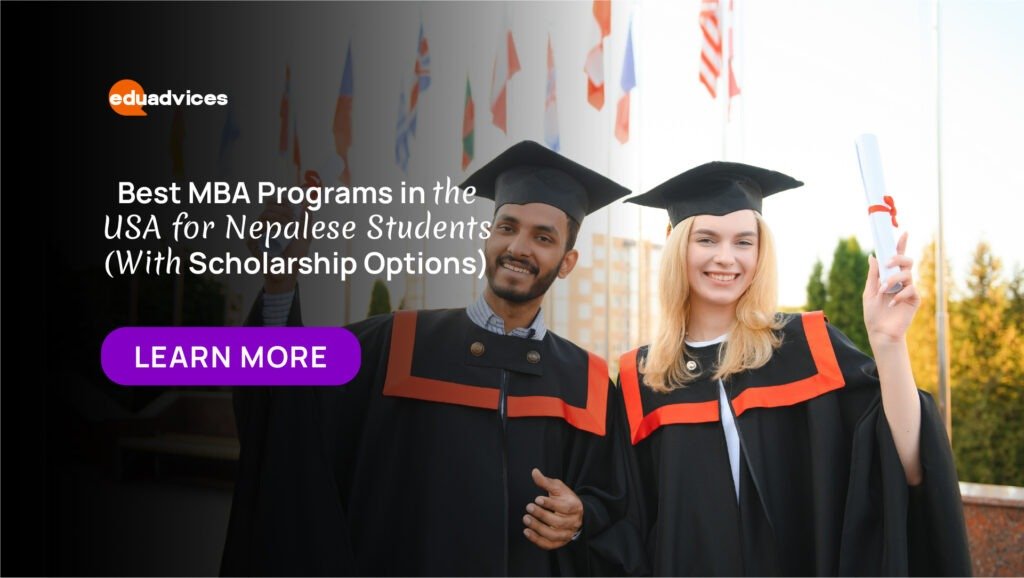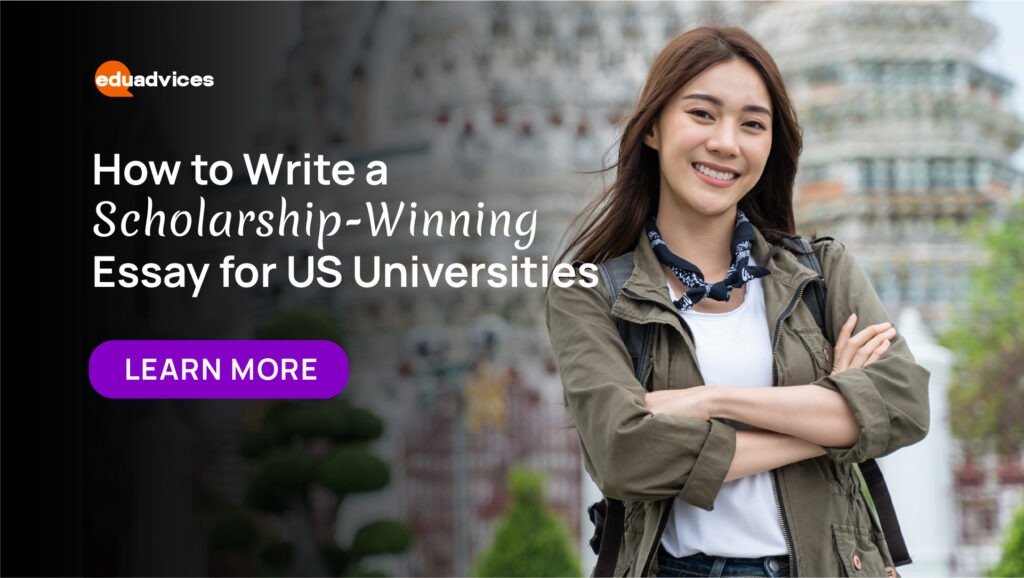Best MBA Programs in the USA for Nepalese Students (With Scholarship Options)
Best MBA Programs in the USA for Nepalese Students are among the most sought-after choices for ambitious professionals aiming to boost their careers internationally. The United States is renowned for its world-class business schools, innovative curriculum, and strong industry connections, attracting students from across the globe. In recent years, the number of Nepalese students pursuing an MBA in the USA has grown steadily, thanks to opportunities for global exposure, high earning potential, and access to top alumni networks. While tuition can be high, numerous MBA scholarships for international students, including merit-based and need-based awards, make it possible for talented Nepalese students to enroll in leading MBA programs in the USA without financial strain. Why Choose The USA For Your MBA? Pursuing an MBA in the USA for Nepalese students is a strategic investment in world-class education and global career growth. The country is home to some of the best MBA programs in the USA, with prestigious institutions like Harvard Business School, Stanford Graduate School of Business, and The Wharton School consistently ranking among the top worldwide. Studying in the USA also provides unmatched global exposure and networking opportunities. You’ll interact with classmates, professors, and industry leaders from diverse backgrounds, creating connections that can lead to international job offers, internships, and entrepreneurial ventures. Another advantage is the wide range of MBA specializations available, from Finance, Marketing, and Technology Management to Entrepreneurship and Sustainable Business. This flexibility allows you to tailor your MBA to your career goals and future ambitions. Finally, the return on investment for an MBA in the USA remains one of the highest globally. Graduates from top U.S. business schools often secure high-paying roles, with average post-MBA salaries ranging from USD $120,000 to $160,000 annually, making your educational investment worthwhile in the long term. Factors To Consider When Choosing An MBA Program Choosing the right MBA program is one of the most important decisions for Nepalese students planning to study in the USA. With so many options available, it’s essential to look beyond rankings and consider factors that will directly impact your learning experience and career prospects. Accreditation Ensure the business school is accredited by recognised bodies such as AACSB, AMBA, or EQUIS. Accreditation guarantees that the school meets global academic and professional standards, a crucial factor when investing in one of the best MBA programs USA offers. Specialisations and Curriculum Flexibility Look for programs that allow you to customize your MBA with specialisations like Finance, Marketing, Technology, or Entrepreneurship. A flexible curriculum ensures you can align your studies with your career goals. Location and Industry Connections The school’s location can significantly influence your networking opportunities. For example, an MBA in New York connects you to finance hubs, while Silicon Valley offers access to leading tech companies. Proximity to industry hubs can open doors to internships and job placements. Alumni Network A strong alumni network is invaluable for career growth. Graduates from top U.S. business schools often hold leadership positions worldwide, providing mentorship, job leads, and professional support. Cost and Scholarships MBA programs in the USA can be expensive, but many offer MBA scholarships for international students, including merit-based and need-based awards. Research scholarship options early to make your education more affordable. Best MBA Programs in the USA For Nepalese Students While top Ivy League schools like Harvard and Stanford are highly competitive, many excellent U.S. business schools offer high-quality education, strong alumni networks, and better accessibility for Nepalese students pursuing an MBA in the USA. Below are some universities that are popular among Nepalese students and offer good admission chances, quality education, and MBA scholarships for international students. University of Massachusetts Boston – College of Management Location: Boston, Massachusetts Why it’s popular among Nepalese students: UMass Boston has a significant South Asian student community, including many from Nepal. Program highlights: Affordable tuition compared to many U.S. universities, flexible MBA specialisations (Finance, Business Analytics, Marketing), and evening/weekend classes for working students. Scholarship options: Merit-based scholarships for high-achieving international students. University of Central Missouri – Harmon College of Business and Professional Studies Location: Warrensburg, Missouri Why it’s popular: Easier admission requirements (GMAT waivers available for qualified students), reasonable tuition fees, and a welcoming environment for Nepalese students. Program highlights: Strong focus on leadership and practical business skills; small class sizes for personalised learning. Scholarship options: International Student Merit Scholarship and Graduate Assistantships. Pittsburg State University – Kelce College of Business Location: Pittsburg, Kansas Why it’s popular: Affordable cost of living, relatively lower tuition, and a history of Nepalese graduates who’ve successfully secured U.S. jobs or OPT opportunities. Program highlights: STEM-designated MBA tracks, internship opportunities with local and national companies. Scholarship options: International Excellence Scholarships and in-state tuition benefits for qualified students. Lamar University – College of Business Location: Beaumont, Texas Why it’s popular: Flexible online and on-campus MBA options, generous scholarship opportunities, and easy access to Houston’s job market. Program highlights: Accelerated MBA option (can be completed in 12–18 months) with specialisations in Management, Marketing, and International Business. Scholarship options: Lamar University Competitive Graduate Merit Scholarship. Southeast Missouri State University – Harrison College of Business and Computing Location: Cape Girardeau, Missouri Why it’s popular: Affordable tuition, active Nepalese Student Association, and a supportive academic environment. Program highlights: AACSB-accredited, emphasis on real-world projects, and close faculty-student interaction. Scholarship options: International Student Scholarships and Graduate Assistantships. Minnesota State University Moorhead – Paseka School of Business Location: Moorhead, Minnesota Why it’s popular: Safe and welcoming community, relatively easier admission compared to top-tier MBA schools, and strong regional business ties. Program highlights: Flexible part-time and full-time options, leadership development programs, and industry connections in the Midwest. Scholarship options: International Student Academic Merit Awards. University of South Dakota – Beacom School of Business Location: Vermillion, South Dakota Why it’s popular: Very competitive tuition rates, multiple specialisation options, and a high acceptance rate for international students, including many from Nepal. Program highlights: AACSB-accredited, experiential learning, and strong graduate employment rates. Scholarship options: Graduate Assistantships and International Student Scholarships. University of Texas at Arlington – College











